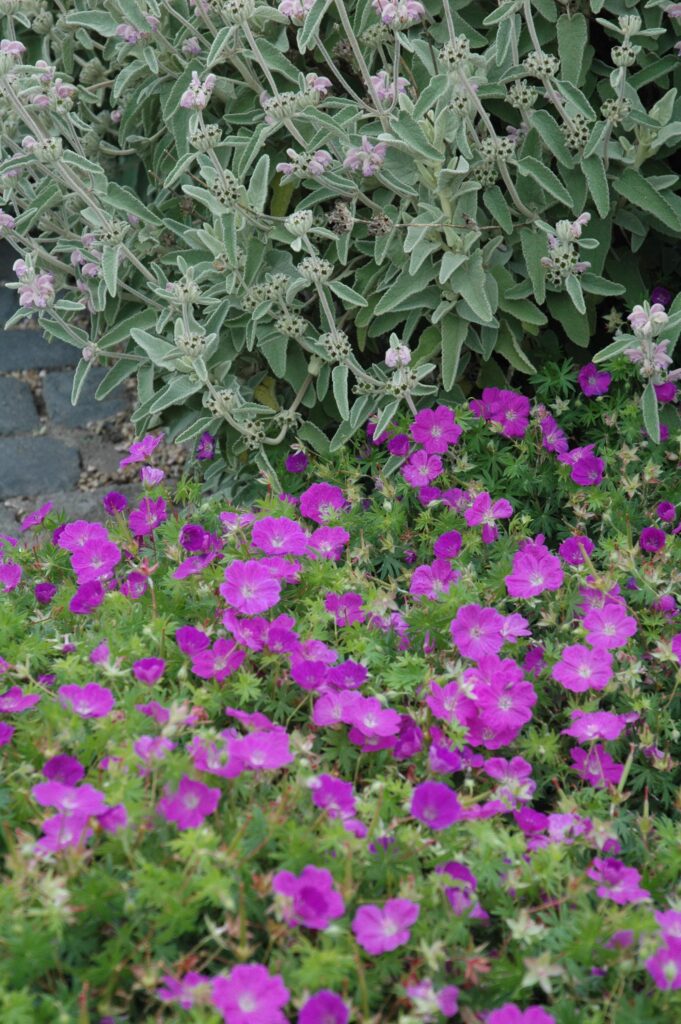
Happy Easter to everyone. Many of us think about the garden for the first time this weekend. We get out the garden furniture, rush to buy charcoal for the barbecue on the first sunny evening and we might even tidy up the patio and think about planting for summer. It is still too early to plant out tender summer bedding plants but there is a group of plants that deserve to be in every garden. The hardy geraniums.
These are the hardy plants that can be left outside all year and that come back every spring after (usually) dying back in winter. They are not the plants commonly called ‘geraniums’ that we put out in the garden in summer – those are pelargoniums. This is not the place to go into this matter in great detail but you can read about it on one of my old posts here if you are interested.
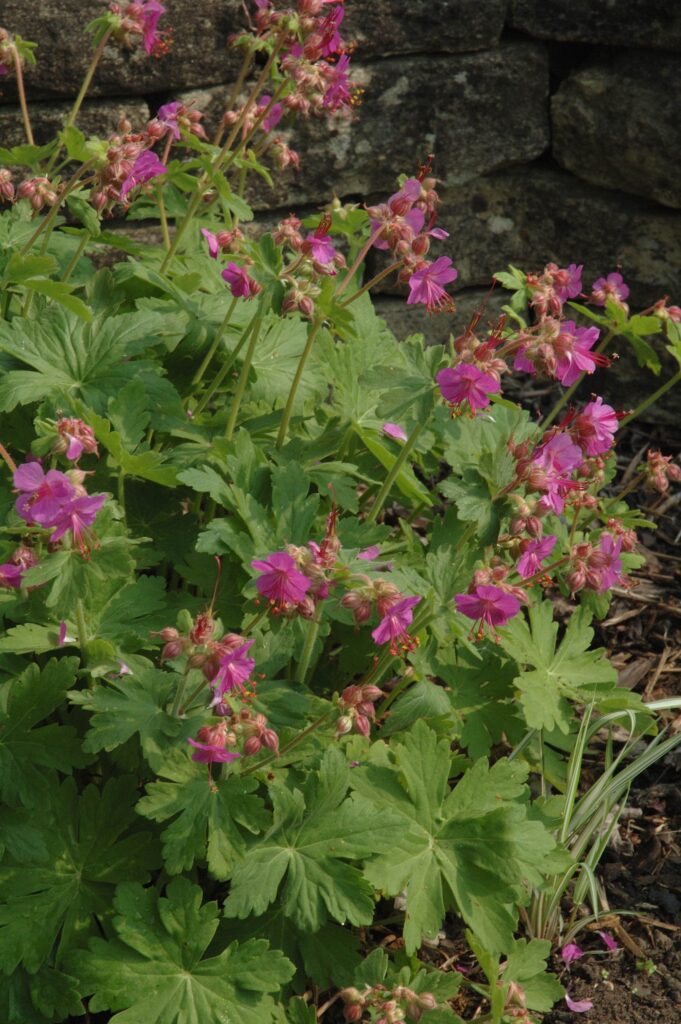
Hardy geraniums are remarkably useful plants in the garden. They vary a little in their needs but most will grow in sun or part shade – some are very good in shade. Some flower for many months, making them pretty and very useful for bees, while others have a shorter but more spectacular display. Most have dense foliage that smothers weeds and they need very little attention. Few are ‘stars of the show’ but are the ‘supporting cast’ and they mix well with other plants and link together the plants in your border.
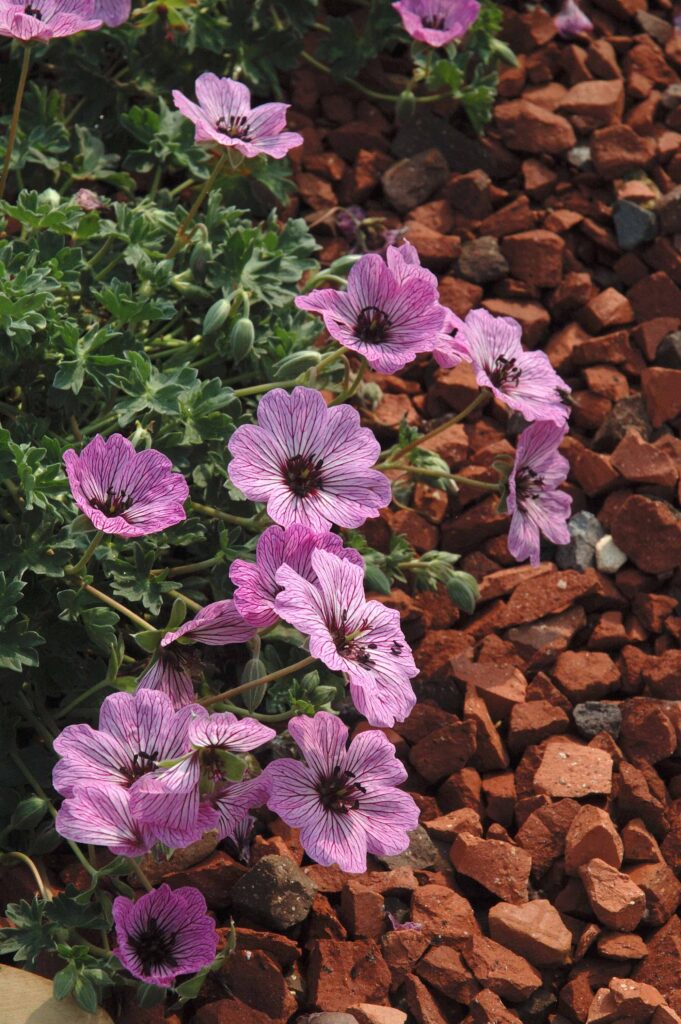
Most are robust plants but a few are small enough for pots, alpine troughs and the front of borders. Although geraniums have been a feature of our gardens for decades, no variety has done more to popularise them than ‘Rozanne’ which was named ‘Plant of the Century’ by the RHS.
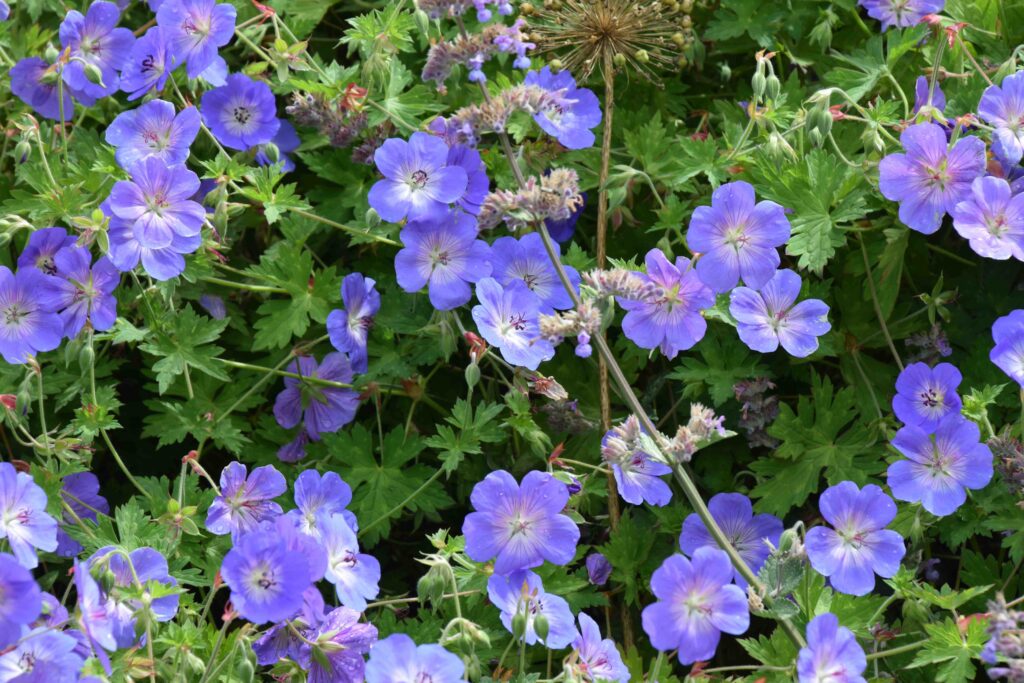
You may not agree with this title but it is certainly true that it is an exceptional plant. It can be a little slow to make an appearance in spring but then it expands across the soil and it can easily grow to about 30cm high and 90cm across by October, scrambling higher if there are shrubs to climb. And from June to October it will display its beautiful blue flowers. It is a plant that should be in every garden. It dies back to the main crown in winter and does not spread outrageously.
Like many others, the spreading growth makes it perfect to plant with daffodils so it will cover up the dying bulb foliage in late spring. And the blooms are rich in nectar and are popular with bees – and other insects. ‘Azure Rush’ is similar but smaller in habit and perhaps better for tiny gardens.
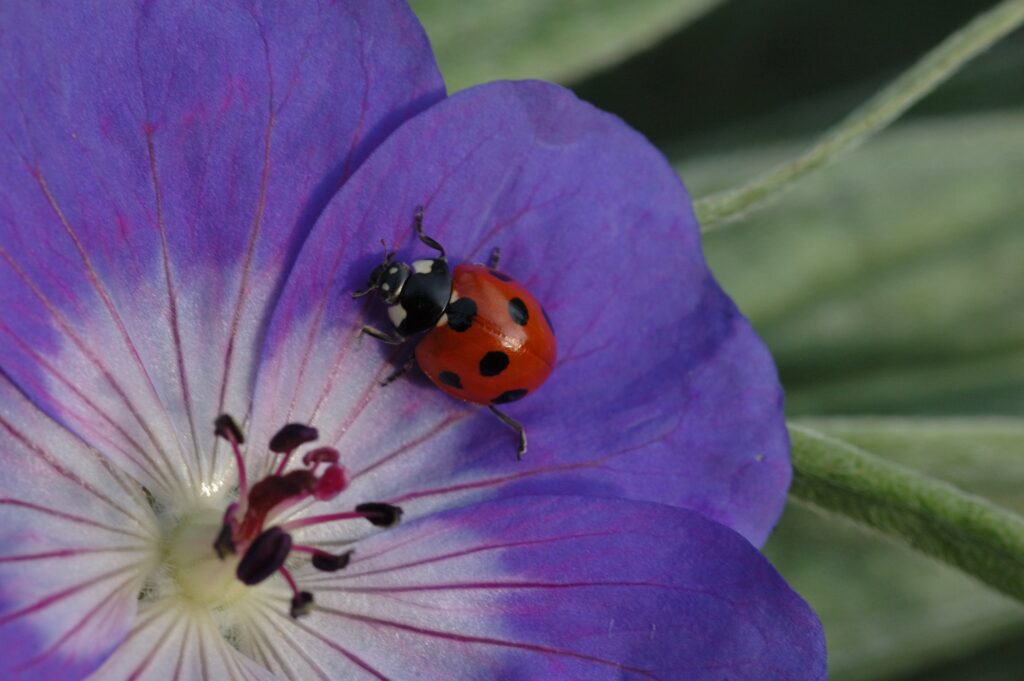
There are many other kinds and if you want something spectacular you should choose G. psilostemon with clouds of dazzling magenta blooms. ‘Anne Folkard’ is bred from this species and shares the same flower colour but the leaves are tinged lemon yellow just to make it stand out more. Both are large plants.
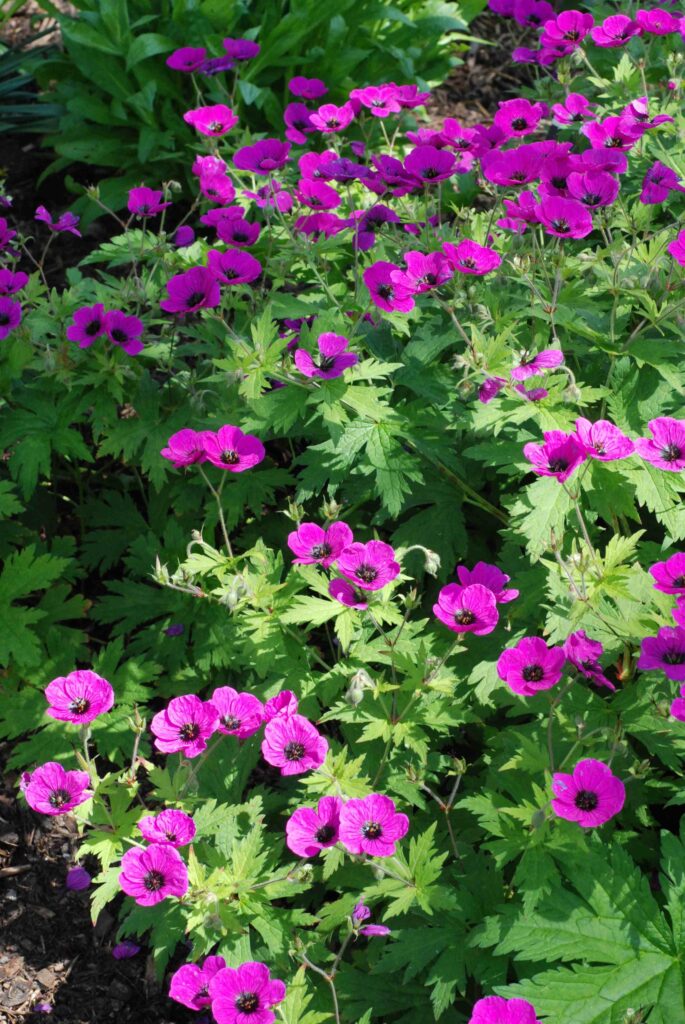
Geranium phaeum is completely different and very subtle. The flowers are deep, liverish purple and open over many months in early summer. It may not sound that attractive but these ‘almost black’ flowers are very pretty and are held high above the mats of leaves. It grows in deep shade if necessary and is great ground cover. Many different forms are now available and I have a soft spot for the white form, especially when planted in shade.
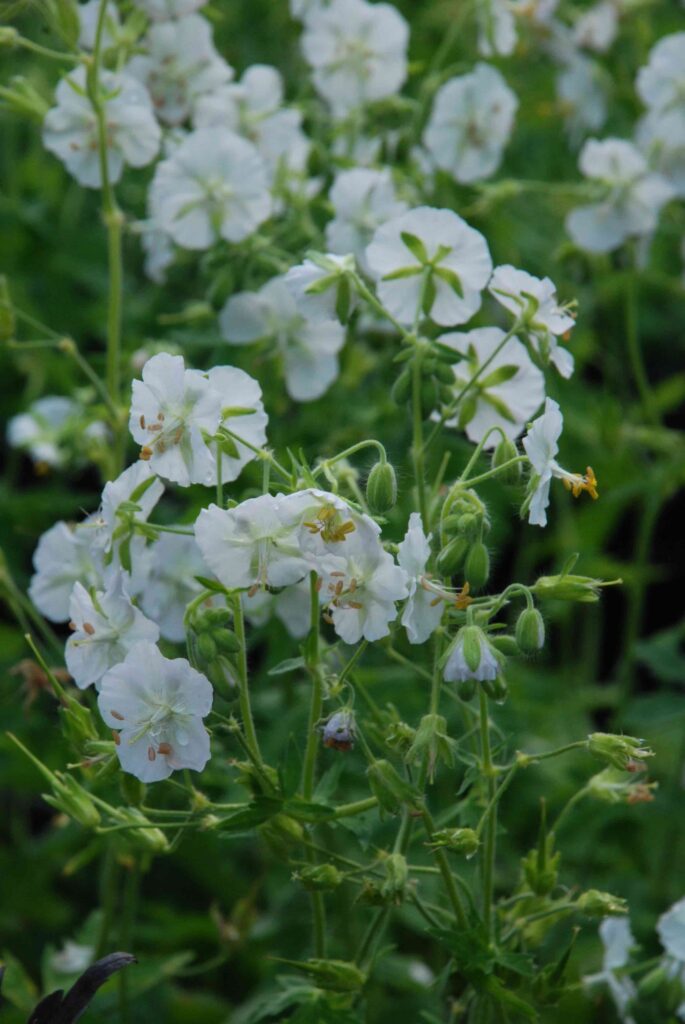
Perhaps the majority of geraniums have pink or mauve flowers and the many forms of G. x oxonianum deserve a place in gardens. They are tough and flower for ages and will thrive in the shade of shrubs, quietly growing and flowering and keeping down weeds. Look out for forms of G. endressii and G. nodosum which is especially easy to please but may seed around if they find your garden to their liking.
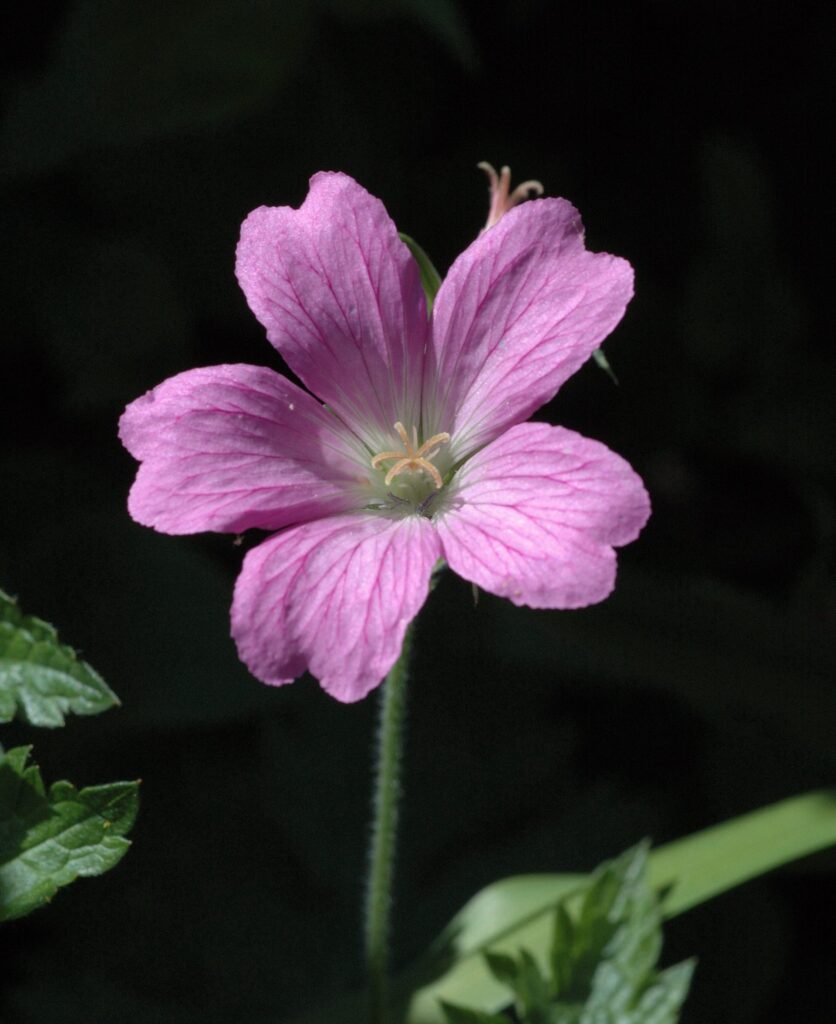
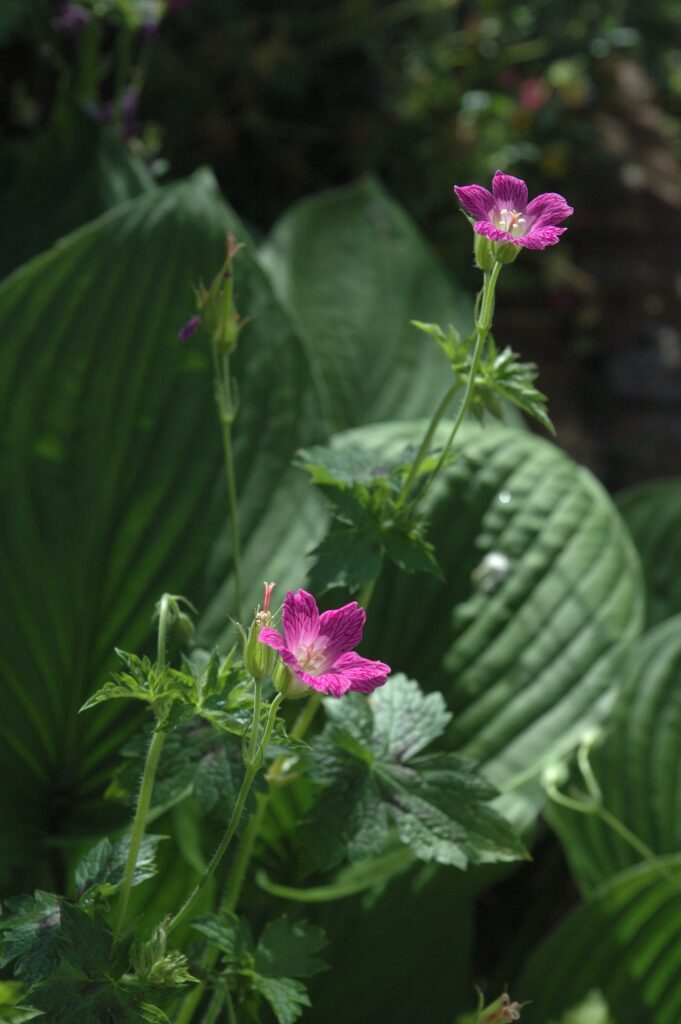
You can buy plants in bloom now and plant them in your border. Prepare the soil well and fork in some compost. Make sure your new plant is well watered, take it from the pot and plant it at the same height as in the pot. You can mulch around the plant with a little compost if you like but make sure it is kept moist until it is well established. Your plant will bloom this year – so you won’t have to wait long!
Make sure you enjoy your Easter weekend and make the most of your garden. A few easy-to-grow perennials like hardy geraniums, help make your garden relaxing. They don’t need a lot of effort, need now staking or spraying and look good all summer. There are lots to collect too and they are addictive.